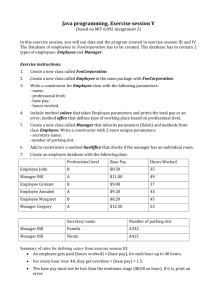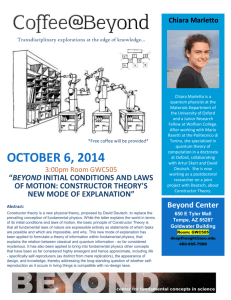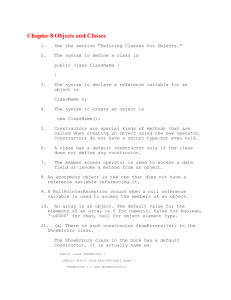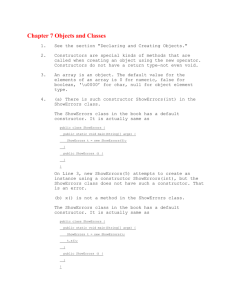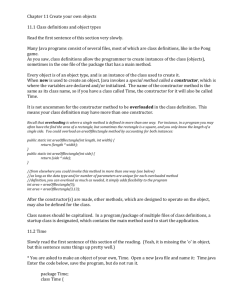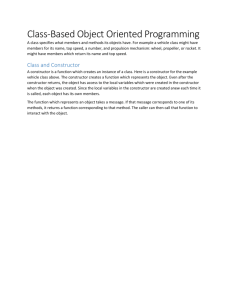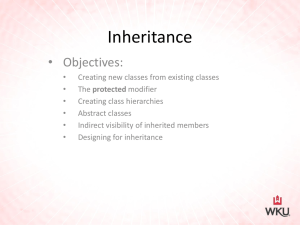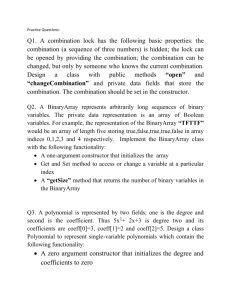Chapter 9 – Life and Death of an Object
advertisement
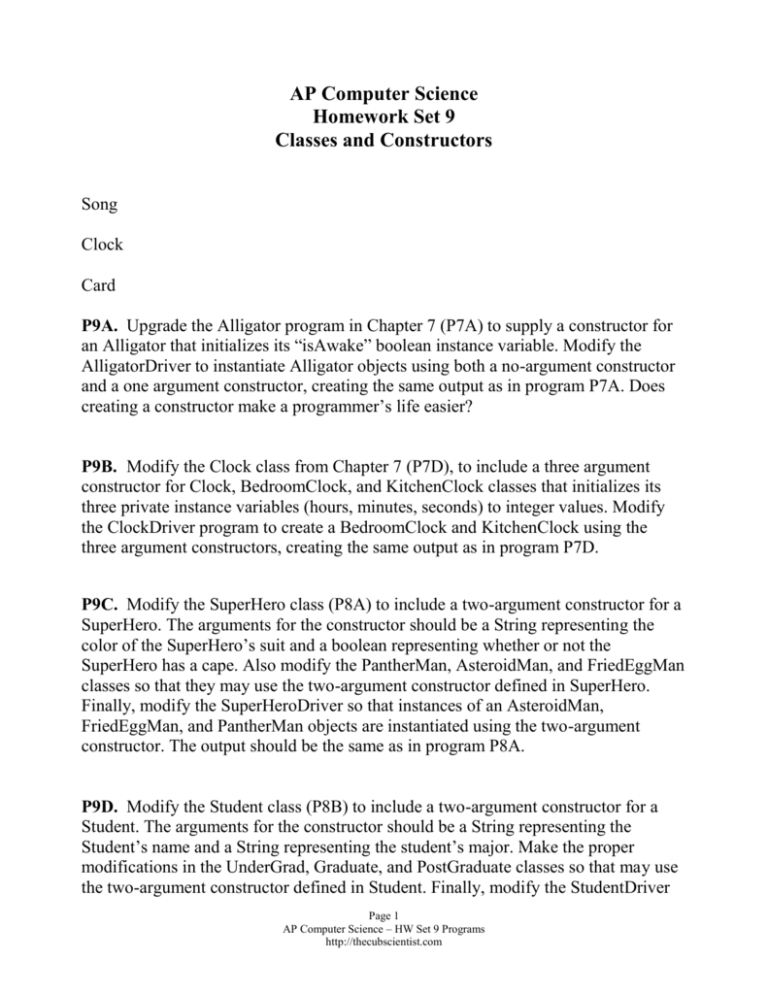
AP Computer Science Homework Set 9 Classes and Constructors Song Clock Card P9A. Upgrade the Alligator program in Chapter 7 (P7A) to supply a constructor for an Alligator that initializes its “isAwake” boolean instance variable. Modify the AlligatorDriver to instantiate Alligator objects using both a no-argument constructor and a one argument constructor, creating the same output as in program P7A. Does creating a constructor make a programmer’s life easier? P9B. Modify the Clock class from Chapter 7 (P7D), to include a three argument constructor for Clock, BedroomClock, and KitchenClock classes that initializes its three private instance variables (hours, minutes, seconds) to integer values. Modify the ClockDriver program to create a BedroomClock and KitchenClock using the three argument constructors, creating the same output as in program P7D. P9C. Modify the SuperHero class (P8A) to include a two-argument constructor for a SuperHero. The arguments for the constructor should be a String representing the color of the SuperHero’s suit and a boolean representing whether or not the SuperHero has a cape. Also modify the PantherMan, AsteroidMan, and FriedEggMan classes so that they may use the two-argument constructor defined in SuperHero. Finally, modify the SuperHeroDriver so that instances of an AsteroidMan, FriedEggMan, and PantherMan objects are instantiated using the two-argument constructor. The output should be the same as in program P8A. P9D. Modify the Student class (P8B) to include a two-argument constructor for a Student. The arguments for the constructor should be a String representing the Student’s name and a String representing the student’s major. Make the proper modifications in the UnderGrad, Graduate, and PostGraduate classes so that may use the two-argument constructor defined in Student. Finally, modify the StudentDriver Page 1 AP Computer Science – HW Set 9 Programs http://thecubscientist.com so that instances of an UnderGrad, Graduate, and PostGraduate objects are instantiated using the two-argument constructor. The output should be the same as in program P8B. P9E. Modify the TV class (P8C) to include a one-argument constructor for a TV. The argument for the constructor should be a Boolean representing whether or not the TV is on. Make the proper modifications in the HDTV and BWTV classes so that may use the one-argument constructor defined in TV. Finally, modify the TVDriver so that instances of an HDTV and BWTW objects are instantiated using the oneargument constructor. The output should be the same as in program P8C. By the end of the lesson students should be able to: a. State that method invocations and local variables are stored on the stack and that objects and its instance variables are stored on the heap. b. Explain why the heap is also known as the “Garbage Collectible Heap”. c. Write the Java code to construct an object using the keyword “new” (i.e. write a zero argument AND one or more argument constructor for an object.) d. Write the Java code for overloaded object constructors. e. Explain that a programmer needs to explicitly write a zero argument constructor if a one or more argument constructor is written by the programmer. f. Explain that every constructor up an inheritance hierarchy is run at the time an object of a subclass is created. g. Write the Java code to invoke an object’s superclass constructor (with no arguments or with one or more arguments.) h. Write the Java code to invoke an overloaded constructor from another constructor using the keyword “this”. i. Explain the difference between life and scope for local variables. j. Explain the three ways to eliminate an object’s reference (i.e. make it eligible for GC.) Page 2 AP Computer Science – HW Set 9 Programs http://thecubscientist.com
